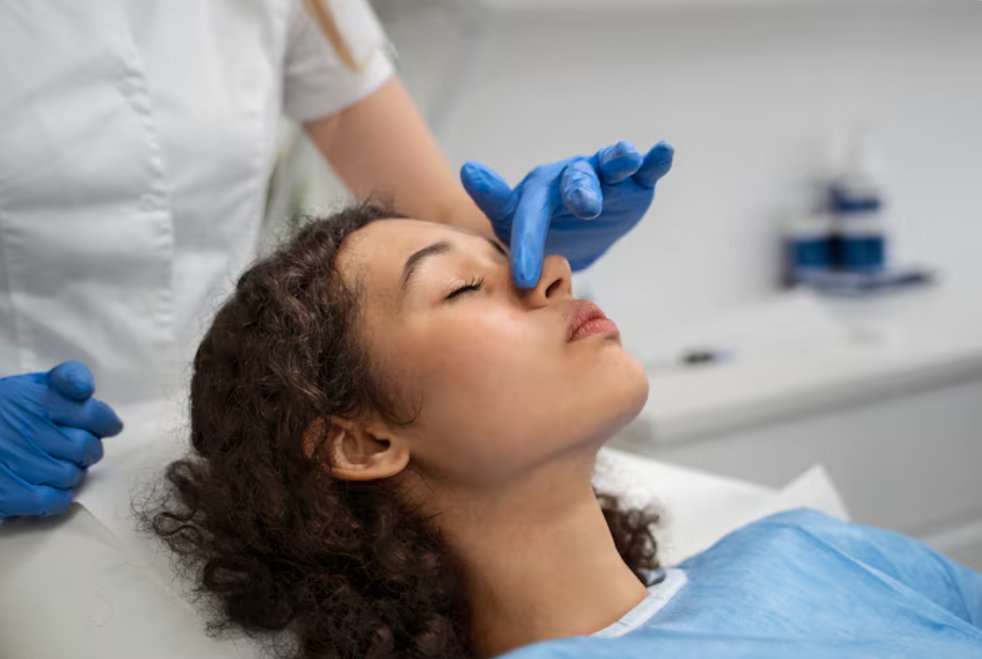Treatment Overview
Primary Rhinoplasty refers to the first-time nose surgery performed to enhance the shape, size, or function of the nose. Unlike revision rhinoplasty, which corrects or adjusts results from previous procedures, primary rhinoplasty offers a fresh opportunity to refine nasal aesthetics while preserving or improving breathing function.
In Korea, primary rhinoplasty is one of the most popular cosmetic surgeries thanks to the country’s world-class surgical expertise, advanced techniques, and natural-looking results. Korean surgeons are renowned for designing noses that harmonize with overall facial features, ensuring balance and elegance without the “overdone” look.
Purpose & Benefits
The main goal of primary rhinoplasty is to reshape and refine the nose while maintaining function. Key benefits include:
- Enhances nasal proportions to match facial balance.
- Corrects issues such as wide nostrils, bulbous tips, or dorsal humps.
- Improves breathing in cases of deviated septum or nasal obstruction.
- Provides natural, elegant results tailored to each patient’s facial harmony.
- Avoids the complexity and risks associated with revision surgery.
Ideal Candidates
Primary rhinoplasty in Korea is suitable for individuals who:
- Have never undergone nose surgery before.
- Are dissatisfied with the size, shape, or profile of their nose.
- Have functional breathing issues alongside cosmetic concerns.
- Desire natural-looking improvements rather than drastic alterations.
- Are in good general health with realistic expectations.
Possible Risks & Complications
While generally safe in Korea’s advanced clinics, potential risks include:
- Temporary swelling and bruising.
- Mild discomfort or numbness around the nose.
- Scar visibility (minimized with hidden incisions).
- Asymmetry during healing.
- Rare complications such as infection or dissatisfaction with aesthetic outcome.
Surgical Techniques Used
Korean surgeons employ a range of refined techniques for primary rhinoplasty depending on patient needs:
- Open Rhinoplasty: For greater visibility and precision, especially in complex reshaping.
- Closed Rhinoplasty: For simpler refinements with no external scar.
- Dorsal Hump Reduction: Shaving or preservation-based approaches to refine nasal profile.
- Tip Surgery: Techniques such as dome binding sutures, cephalic trim, or shield graft for definition.
- Alar Base Reduction: Narrowing wide nostrils using Weir or sill excisions.
- Augmentation Rhinoplasty: Using silicone implants, Gore-Tex, or autologous cartilage for bridge height.
- Functional Corrections: Septoplasty or turbinate reduction when needed.
Recovery & Aftercare
- Initial Recovery: Swelling and bruising peak in the first 3–5 days, then gradually improve.
- Stitches/Splint Removal: Within 5–7 days.
- Downtime: Most patients return to work or school within 7–10 days.
- Full Healing: Results stabilize over 3–6 months, with final refinement visible at 12 months.
- Aftercare in Korea: Specialized therapies such as anti-swelling injections, LED light therapy, and laser scar management are often provided to speed recovery.
Results & Longevity
Primary rhinoplasty provides long-term and stable results when performed by an experienced Korean surgeon. Since it’s the first surgery, nasal tissues are less scarred and more adaptable, allowing for smoother, more predictable outcomes compared to revision surgery. Results are designed to be natural, harmonious, and lasting for a lifetime, provided proper care is taken post-surgery.
Treatment Process in Korea
Korea has become a global hub for rhinoplasty due to its specialized techniques and high patient satisfaction.
Consultation:
- Detailed facial analysis using 3D imaging.
- Customized planning based on ethnicity, facial ratios, and patient goals.
Pre-Surgery Care:
- Medical assessments and anesthesia planning.
- Digital simulations for expected outcomes.
Surgery:
- Duration: 1.5–3 hours depending on complexity.
- Performed under local anesthesia with sedation or general anesthesia.
- Minimally traumatic techniques to preserve structure and reduce recovery time.
Post-Surgery Care:
- Advanced swelling and scar treatments.
- Regular check-ups to monitor healing.
- Full English-language support for international patients.
Why Korea?
- Surgeons highly trained in both aesthetic and functional rhinoplasty.
- Emphasis on natural, subtle refinement rather than exaggerated results.
- Clinics offer medical tourism services, including translators, VIP recovery rooms, and aftercare programs.
Cost Range
The cost of primary rhinoplasty in Korea varies depending on surgical complexity, materials used, and surgeon expertise.
- General Price Range: ₩4,500,000 – ₩12,000,000 KRW (approx. $3,500 – $9,200 USD).
- Basic Packages Include: Consultation, anesthesia, surgery, and routine postoperative care.
- Premium Packages May Include:
- 3D simulations and advanced imaging.
- Luxury recovery rooms and private nursing.
- Specialized swelling/scar management therapies.
- Full concierge medical tourism services.
Compared to Western countries, Korea offers more competitive pricing with superior refinement techniques, attracting thousands of international patients each year.
Popular Clinics
- Banobagi Plastic Surgery Clinic (Seoul): Known for natural facial balance and artistic nose design.
- ID Hospital (Seoul): One of the largest medical tourism hospitals in Korea specializing in rhinoplasty.
- JW Plastic Surgery Clinic: Expertise in first-time nose surgeries with a focus on structural stability.
- View Plastic Surgery Clinic: Offers advanced 3D simulations and scar-minimizing techniques.
- MINE Plastic Surgery Clinic: Popular among international patients for subtle, elegant results.




